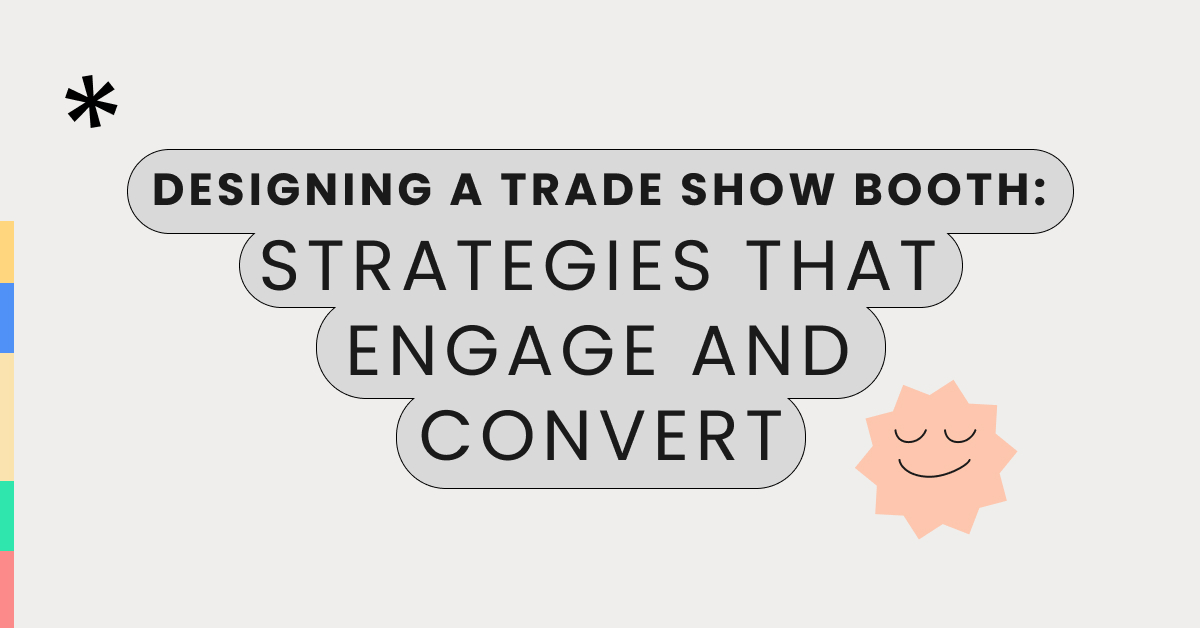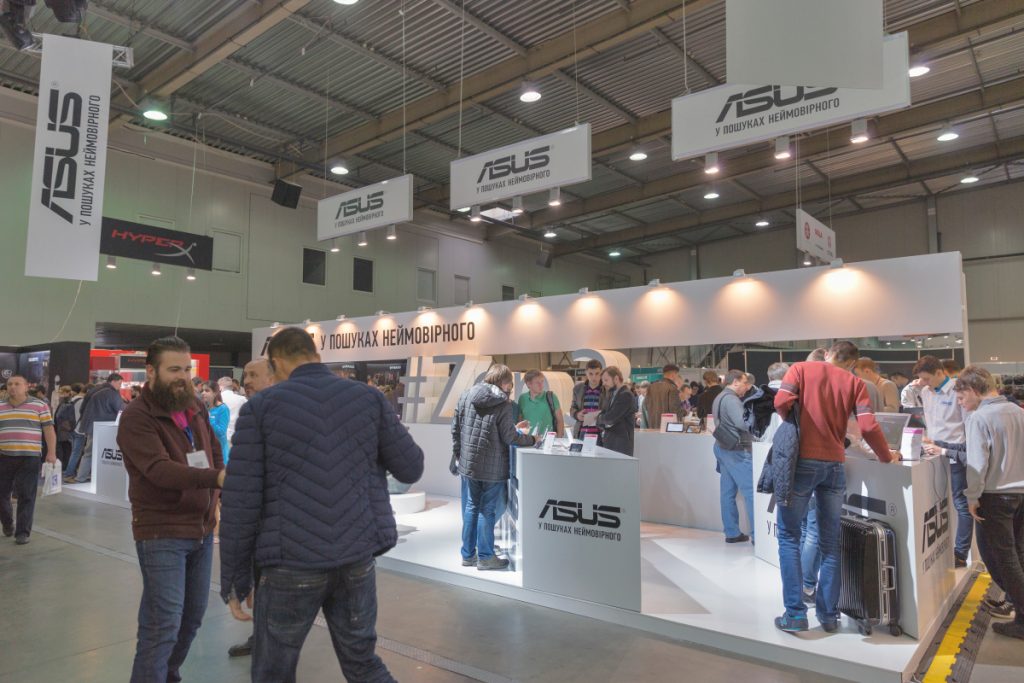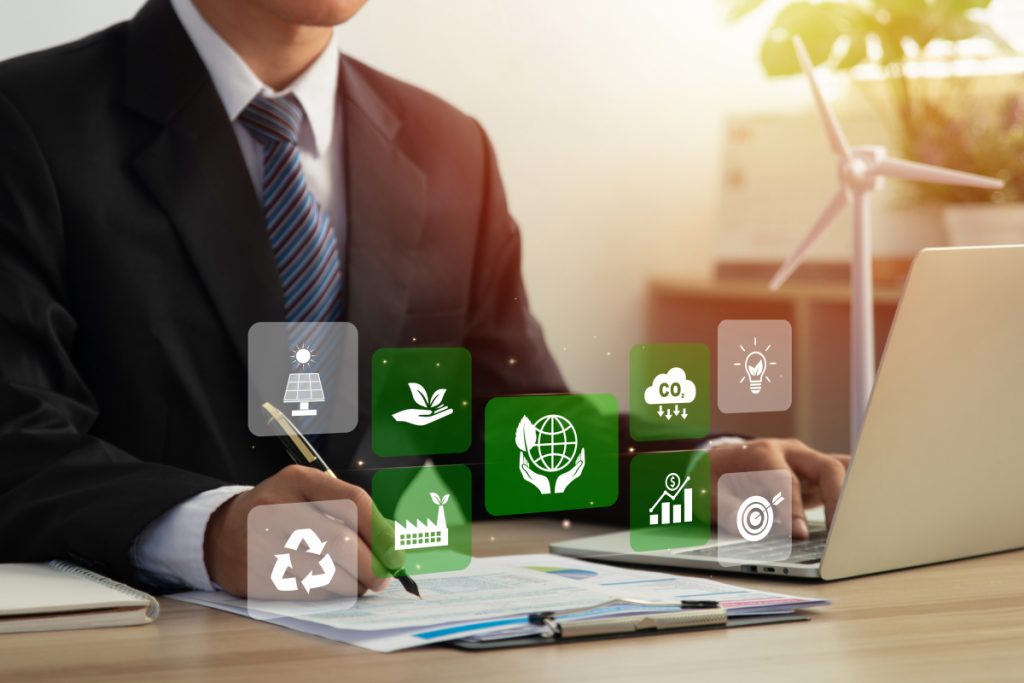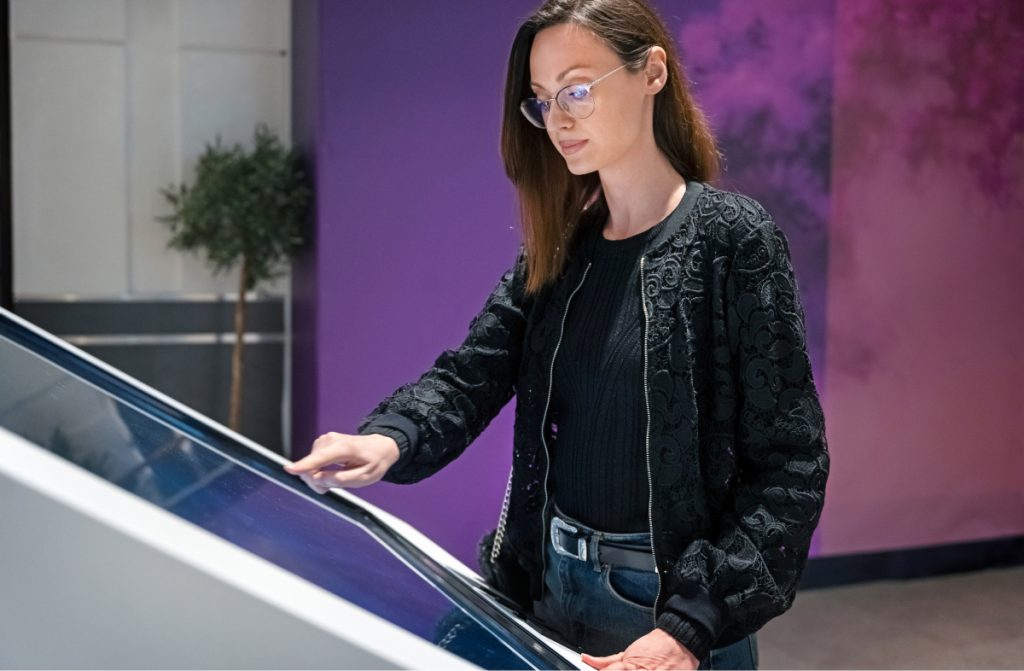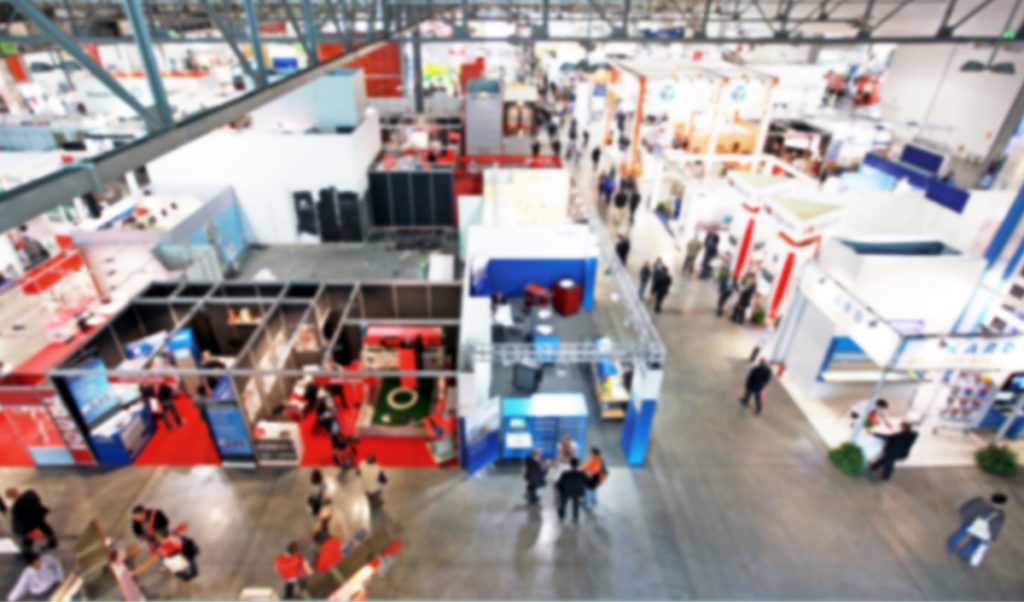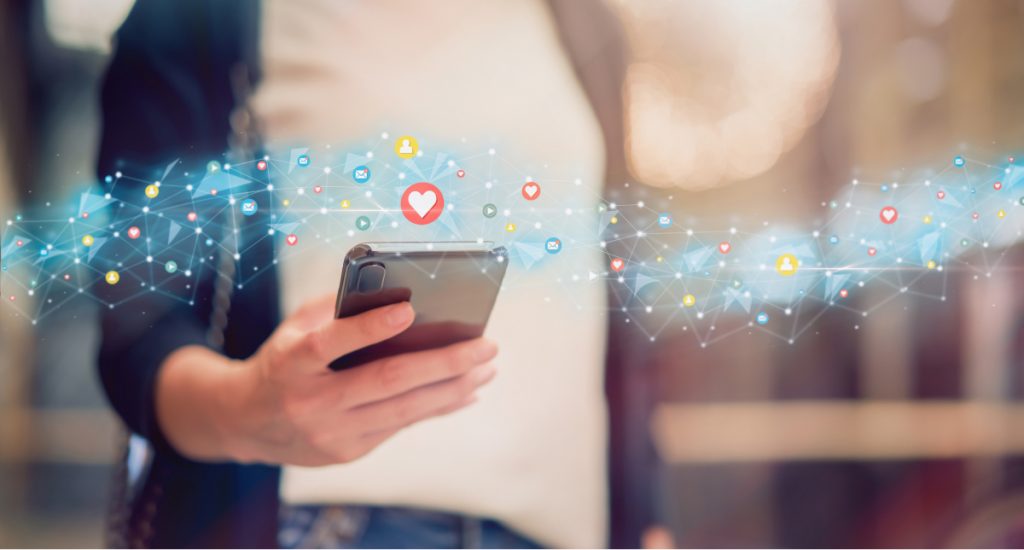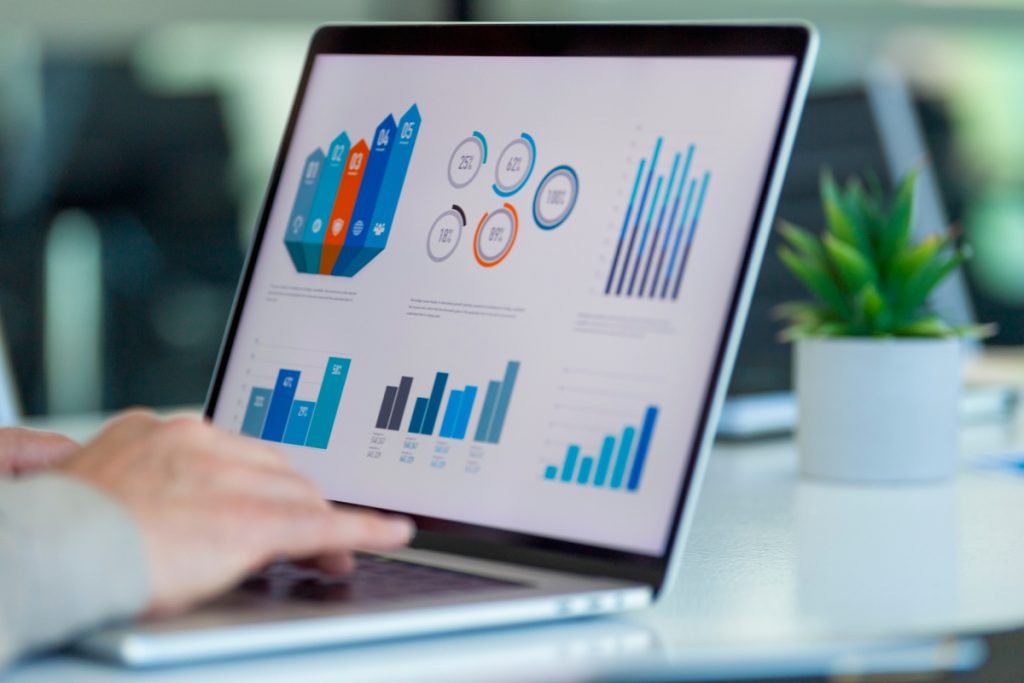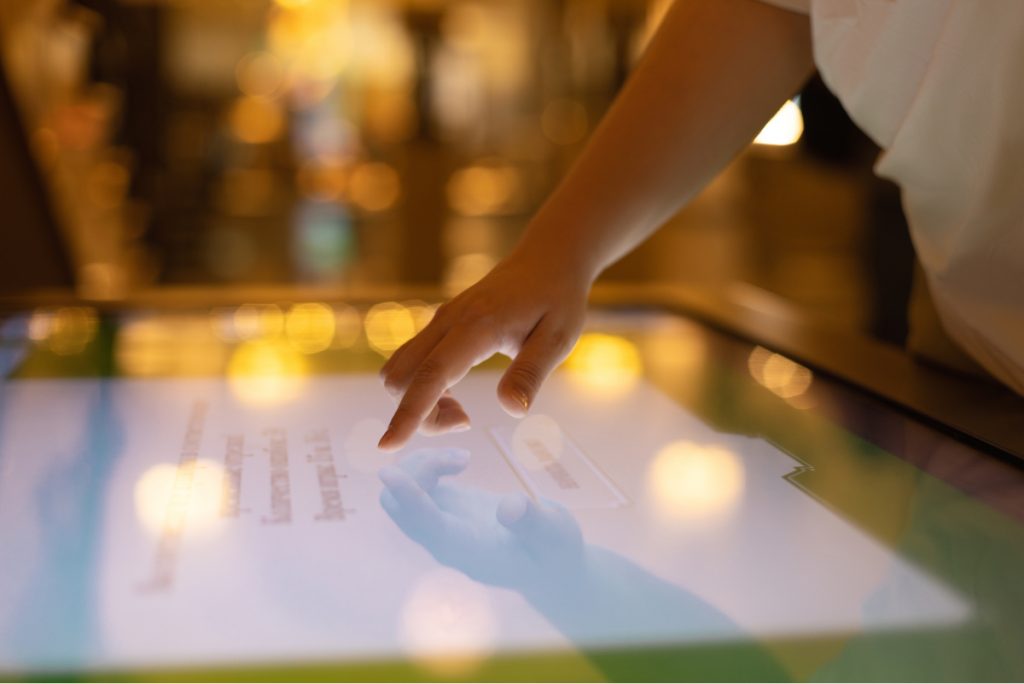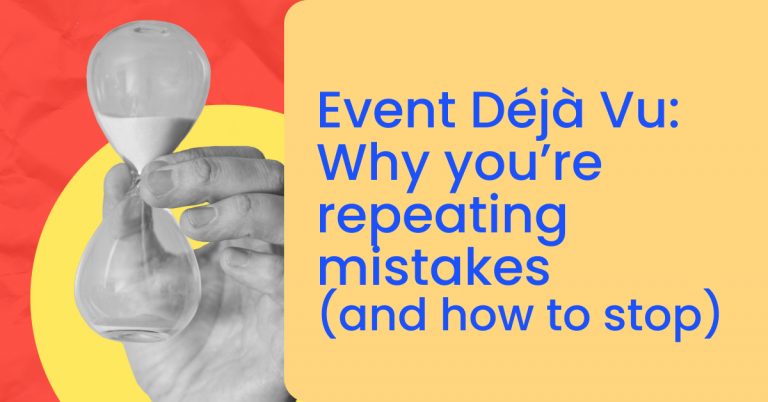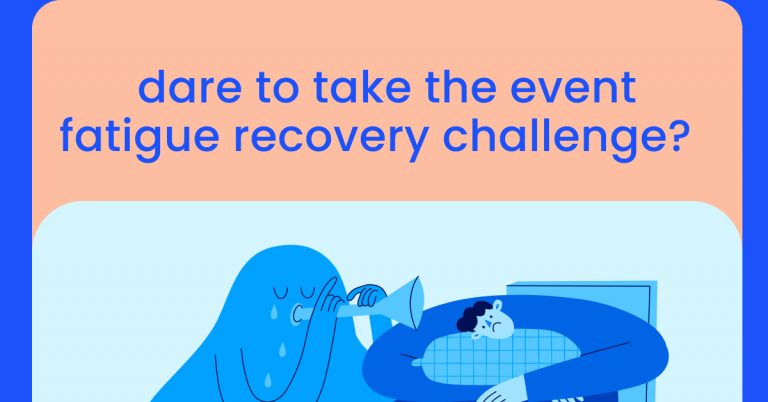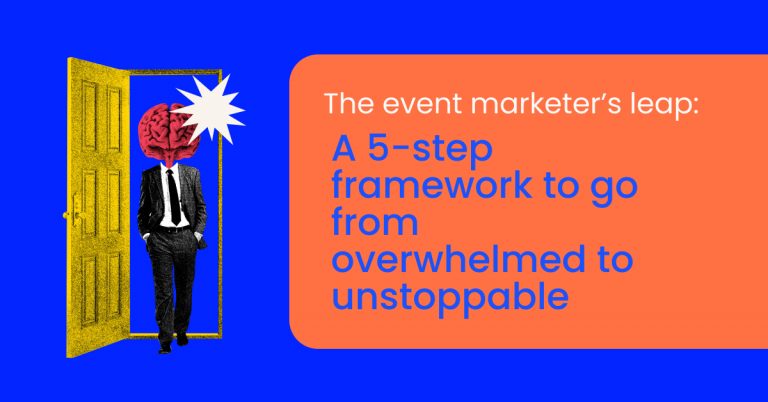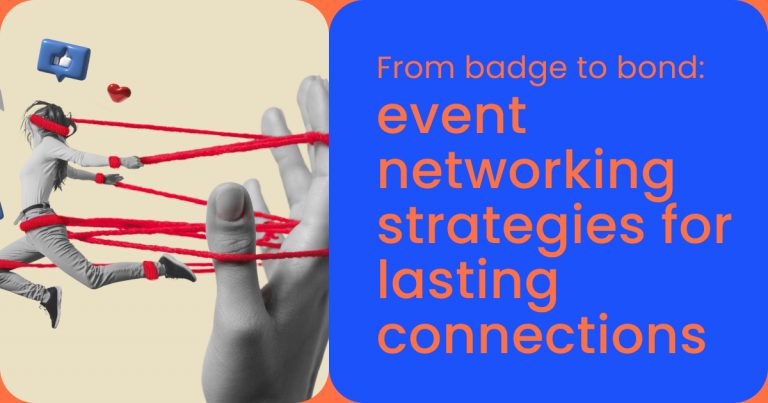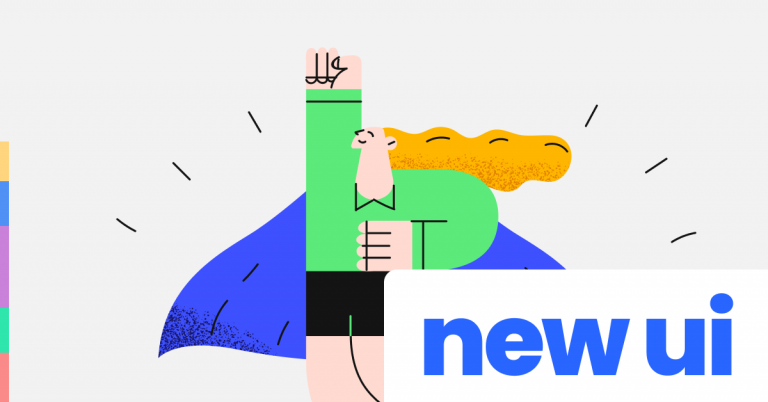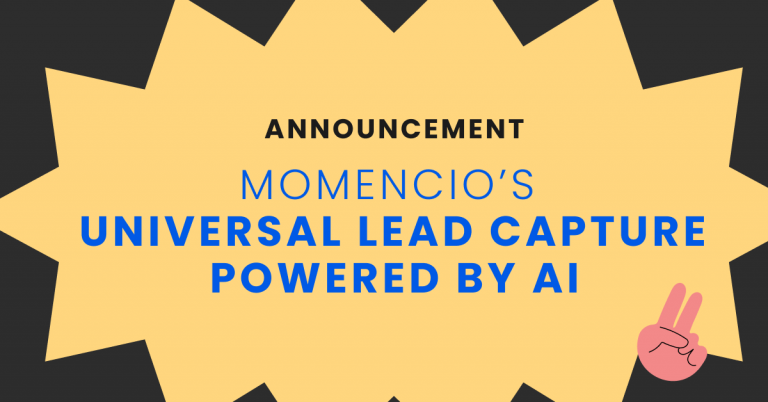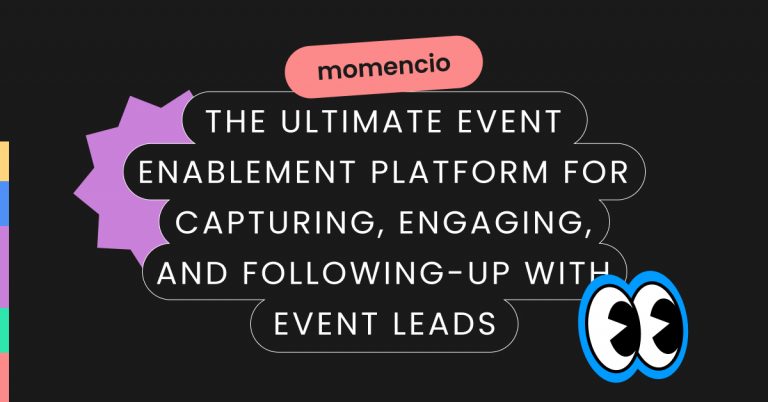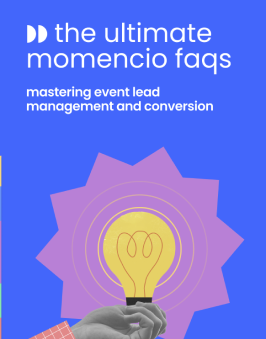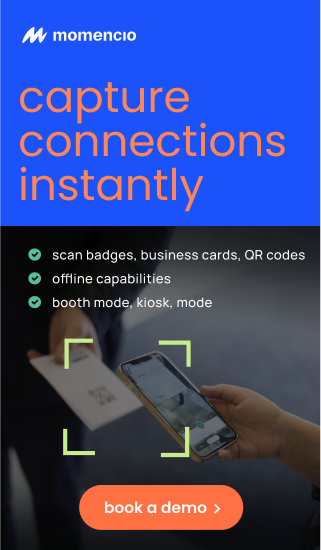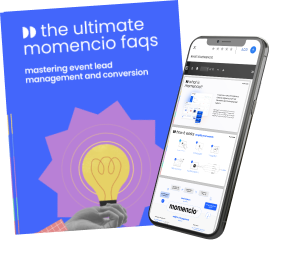Introduction
Trade shows are pivotal for businesses seeking to showcase their offerings, forge new connections, and ultimately drive sales. However, with the exhibition floor teeming with competitors, standing out becomes not just an advantage but a necessity. An impactful trade show booth design is more than just visually appealing; it’s a strategic tool that can significantly influence attendee engagement and conversion rates. According to a recent study by the Center for Exhibition Industry Research, engaging booth designs can increase visitor dwell time by up to 50%, dramatically enhancing the opportunities for lead capture and sales conversations. This article delves into the essentials of creating a trade show booth that not only draws attention but also promotes meaningful interactions and achieves your business objectives.
Interesting Facts from Research: Designing a Trade Show Booth: Strategies That Engage and Convert
The landscape of trade show marketing is constantly evolving, shaped by emerging trends, technological advancements, and shifting attendee behaviors. Research into these areas reveals fascinating insights and statistics that underscore the importance of innovation and strategic planning in trade show participation. Below are some compelling findings that highlight the current state and future directions of trade show marketing.
- Rise of Hybrid Events: The global pandemic accelerated the adoption of virtual and hybrid trade shows. A study found that 97% of marketers believe hybrid events will become more common, blending physical and digital experiences to reach a wider audience.
- Technology Integration: The use of technology in trade shows, particularly augmented reality (AR) and virtual reality (VR) has seen a significant uptick. Research indicates that booths incorporating AR/VR experiences see up to a 33% increase in visitor engagement compared to those without.
- Sustainability as a Priority: Sustainability is becoming a key consideration for both organizers and attendees. A survey revealed that 78% of attendees are more likely to engage with booths that demonstrate a commitment to eco-friendly practices.
- The Impact of Social Media: Social media play a crucial role in trade show marketing. Posts tagged with an event hashtag are shown to increase engagement by 40%, highlighting the power of social media in amplifying event visibility.
- Lead Generation and Follow-Up: Effective lead follow-up post-event is critical for maximizing ROI. Data suggests that businesses that follow up with trade show lead within the first week see a 15% higher conversion rate than those that delay their outreach.
- Personalization Matters: Personalization in trade show marketing is highly effective. Booths offering personalized experiences or content are reported to generate 35% more leads on average than those with a one-size-fits-all approach.
- Attendee Expectations are Changing: Today’s trade show attendees expect more than just informational brochures and free pens. They seek interactive and immersive experiences. Exhibitors that offer engaging, hands-on activities report up to 50% more booth traffic.
- Investment in Design: Investment in booth design correlates with trade show success. Research indicates that companies allocating more than 15% of their trade show budget to booth design tend to have a 32% higher satisfaction rate with their trade show performance.
- Networking Still Key: Despite the digital shift, face-to-face interactions remain invaluable. 85% of exhibitors and attendees cite networking as a primary reason for trade show participation, emphasizing the importance of creating spaces conducive to conversation and connection.
- Data-Driven Decision-Making: The use of data analytics in trade show marketing is on the rise. Exhibitors utilizing real-time data to adjust their engagement strategies report a 20% higher lead capture rate compared to those who don’t.
In the following sections, we explore the steps and strategies to design a booth that stands out, from selecting eco-friendly materials and integrating interactive elements to measuring the success of your design. Whether you’re an experienced event planner or a first-time exhibitor, these insights aim to equip you with the knowledge and tools necessary to transform your trade show presence. And for those looking to leverage advanced event marketing tools, momencio offers a suite of solutions designed to enhance your trade show success.
Designing a Trade Show Booth That Stands Out
Creating a tradeshow booth that stands out in a sea of exhibitors is crucial for making a memorable impact on attendees. A well-designed booth not only draws visitors but also engages them in meaningful ways, paving the path for successful interactions. This section delves into the essential components for a successful trade show booth. It explores how to weave your brand identity and storytelling into the design to create a truly immersive experience.
Essential Components for Success
The foundation of a standout trade show booth lies in its ability to communicate your brand essence and engage visitors on multiple levels. Here are the key components to consider:
- Visual Appeal: First impressions matter. Use bold, clear visuals that align with your brand identity to catch the eye of passersby. High-quality graphics, dynamic lighting, and a cohesive color scheme can make your booth visually striking.
- Interactive Elements: Encourage participation through interactive displays, product demos, or digital touchpoints. These elements can provide a hands-on experience with your products or services, making the visit memorable.
- Clear Messaging: Your booth should convey your key messages succinctly and effectively. Use concise, impactful copy that speaks to the needs and interests of your audience, ensuring your value proposition is understood at a glance.
- Comfortable Space: Provide a welcoming and comfortable area for deeper conversations. Seating areas, refreshment stations, or private meeting spaces can make your booth a pleasant respite for attendees.
- Brand Consistency: Ensure every element of your booth reflects your brand’s style, values, and message. Consistency reinforces brand recognition and builds trust with your audience.
- Functionality: Your booth should facilitate easy flow and access to information. Consider the layout carefully, ensuring it supports engagement and doesn’t create bottlenecks.
Incorporating Brand Identity and Storytelling
A compelling narrative can transform your trade show booth from a mere physical space into a captivating brand experience. Here’s how to infuse your booth design with your brand identity and storytelling:
- Tell Your Brand’s Story Visually: Use your booth design to narrate your brand’s journey or highlight your unique selling proposition. Employ visuals, timelines, or interactive media to tell a story that resonates with your audience.
- Create Themed Environments: Design your booth around a theme that embodies your brand message or campaign focus. This can make your space more engaging and memorable, encouraging visitors to explore and interact.
- Leverage Multimedia: Incorporate videos, animations, or augmented reality to bring your brand story to life. Multimedia presentations can captivate attention and provide an immersive experience that print materials cannot.
- Personalize the Experience: Tailor interactions within your booth to reflect the visitor’s interests or industry. Personalization can make attendees feel valued and more receptive to your messaging.
- Share Customer Success Stories: Incorporate testimonials or case studies into your booth design. Real-life success stories can validate your offerings and build credibility.
- Train Your Team on Storytelling: Equip your staff with narratives about your brand and products. Their ability to weave these stories into conversations can enrich the visitor experience and deepen engagement.
Eco-friendly Materials for Sustainable Booth Design
In today’s environmentally conscious world, integrating sustainability into trade show booth design is not just a noble endeavor but a strategic business decision. Eco-friendly designs can significantly enhance your brand’s image, resonate with like-minded attendees, and contribute to a healthier planet. This section explores sources for sustainable materials and the manifold benefits of adopting eco-friendly designs in your trade show exhibits.
Sources for Sustainable Materials
- Recycled and Upcycled Materials: Seek out suppliers that specialize in recycled or upcycled fabrics, plastics, and metals. These materials reduce waste and energy consumption associated with production. Examples include recycled aluminum for booth structures and upcycled PET fabrics for banners.
- Biodegradable and Compostable Materials: For disposable elements of your booth design, such as flooring or product packaging, consider materials that are biodegradable or compostable. Bamboo, cork, and certain bioplastics are excellent options that decompose naturally, reducing landfill waste.
- Low-VOC Finishes and Paints: Volatile organic compounds (VOCs) in finishes and paints can release harmful chemicals into the air. Low-VOC options improve air quality and are better for the health of booth staff and attendees.
- Digital Collateral: Reduce paper waste by opting for digital brochures, product catalogs, and business cards. Tools like QR codes can direct visitors to your online materials, offering an eco-friendly alternative to traditional printouts.
- LED Lighting: LED lights consume significantly less energy than traditional lights and have a longer lifespan, reducing both energy use and waste.
Benefits of Eco-friendly Designs
- Enhanced Brand Perception: Demonstrating a commitment to sustainability can strengthen your brand’s reputation and appeal to a growing segment of environmentally conscious consumers and businesses.
- Cost Savings: While the initial investment in eco-friendly materials may be higher, they often lead to cost savings in the long run due to their durability and the efficiency of technologies like LED lighting.
- Competitive Advantage: An eco-friendly booth can differentiate your brand on the trade show floor, attracting more visitors and potential leads interested in sustainable practices.
- Healthier Environments: Using low-VOC materials and promoting digital collateral contributes to a healthier environment for your staff and attendees by reducing exposure to harmful substances and waste.
- Compliance and Leadership: As regulations around sustainability tighten, adopting eco-friendly practices early positions your brand as a leader in corporate responsibility, potentially influencing industry standards and practices.
- Positive Impact on the Planet: Ultimately, choosing sustainable booth design materials and practices helps reduce your carbon footprint, conserve natural resources, and support the well-being of our planet for future generations.
Incorporating sustainable practices into your trade show booth design not only showcases your brand’s dedication to environmental stewardship but also sets a positive example within your industry. By prioritizing eco-friendly materials and designs, you contribute to a more significant movement towards sustainability, aligning your brand with the values of a rapidly growing eco-conscious audience. As we navigate towards a greener future, integrating tools like momencio into your event marketing strategy can further amplify your sustainability efforts by minimizing paper waste through digital lead capture and follow-up, ensuring that your trade show participation is both impactful and responsible.
Designing a Trade Show Booth: Creating Interactive Trade Show Exhibits
Designing a Trade Show Booth
In the bustling environment of a trade show, interactive exhibits stand as beacons of engagement, attracting attendees by offering them not just information but an experience. The incorporation of interactive elements into your booth design plays a pivotal role in capturing attention, fostering engagement, and leaving a lasting impression. Below, we explore various examples of interactive elements and best practices to maximize attendee engagement.
Examples of Interactive Elements
- Touchscreen Kiosks: Deploy touchscreen kiosks for attendees to explore your products or services at their own pace. Include product catalogs, interactive demos, or educational games related to your industry.
- Augmented Reality (AR) Experiences: Utilize AR to create immersive experiences where visitors can visualize your products in real-world scenarios or participate in virtual product demonstrations, enhancing understanding and engagement.
- Virtual Reality (VR) Demonstrations: Offer VR headsets for attendees to experience immersive simulations, tours, or product uses. VR can transport visitors to environments or situations that showcase your offerings in action.
- Live Polling and Q&A Sessions: Engage attendees with live polls or Q&A sessions using a large screen or mobile app. This not only involves the audience but also provides valuable insights into their preferences and questions.
- Product Demonstrations and Workshops: Hands-on demonstrations or workshops where attendees can interact with your products or learn something new can be highly engaging and informative, encouraging deeper connections with your brand.
- Social Media Integrations: Encourage visitors to share their experiences at your booth on social media with branded hashtags. Offer photo opportunities or interactive challenges that naturally inspire sharing.
- Gamification: Incorporate game elements such as leaderboards, quizzes, or contests related to your products or industry knowledge—reward participation with prizes or recognition to boost engagement.
Best Practices for Engagement
- Define Clear Objectives: Before selecting interactive elements, define what you aim to achieve – whether it’s product education, lead capture, or brand awareness. This will guide your choice of interactive experiences.
- Ensure Relevance to Your Audience: Tailor interactive experiences to your target audience’s interests and needs. Consider their industry, job roles, and the problems they seek to solve with your solutions.
- Integrate Seamlessly with Booth Design: Interactive elements should complement your overall booth design and not overwhelm it. Ensure they are accessible, easy to use, and clearly connected to your brand message.
- Train Your Team: Ensure your staff is well-versed in guiding attendees through interactive experiences and can effectively communicate key messages. Their ability to engage and assist can significantly enhance the attendee experience.
- Collect Data Ethically: Many interactive elements offer opportunities to collect attendee data. Be transparent about data collection, comply with privacy laws, and ensure a smooth opt-in process for participants.
- Test Before the Show: Prior to the event, test all interactive elements to ensure they function correctly and are user-friendly. This can help avoid technical issues that could hinder engagement.
- Follow Up with Personalized Content: Use insights gathered from interactive experiences for personalized follow-up communications. For example, if an attendee showed interest in a specific product feature during a demo, tailor your follow-up to include more information on that feature.
By incorporating these interactive elements and adhering to best practices for engagement, you can transform your trade show booth into a dynamic and memorable experience for attendees. Interactive exhibits not only draw attention but also encourage active participation, deepening attendees’ connection to your brand. Leveraging technology like momencio can further enhance this connection by enabling real-time lead capture and personalized follow-ups based on attendees’ interactions at your booth, ensuring that the engagement continues well beyond the trade show floor.
Designing a Trade Show Booth: Navigating the Selection of the Right Trade Show Booth
Choosing the right trade show booth is a strategic decision that can significantly influence your event’s success. The selection process involves more than just picking a spot; it’s about aligning your choice with your event goals, brand message, and audience engagement strategy. This section explores the criteria for selecting the right booth, alongside considerations related to size, location, and design, to maximize your trade show presence.
Criteria for Selection Based on Event Goals
- Visibility and Traffic Flow: Identify areas within the event space that naturally receive high foot traffic. Entrances, crossroads, and nearby popular features like seminar areas or food courts are prime spots. High visibility can increase the number of interactions with attendees.
- Target Audience Location: Consider the location of your target audience within the event. If there are specific areas more relevant to your industry or where competitors are clustered, being nearby can ensure you’re part of the key conversations and comparisons.
- Budget Constraints: Your budget will play a significant role in booth selection. Prime locations often come at a premium, so weigh the cost against the potential return in visibility and leads. Sometimes, a well-designed booth in a less expensive location can yield comparable results.
- Booth Size Requirements: Assess the size needed to effectively showcase your products and demos and accommodate staff and attendees comfortably. While larger booths have a strong presence, a well-organized smaller booth can also make a significant impact.
- Brand Alignment: Choose a booth space that allows for the best expression of your brand. Consider how the environment, lighting, and surrounding exhibits will interact with your design and messaging.
Size, Location, and Design Considerations
- Size: Your booth size should accommodate your display, interactive elements, storage, and areas for conversation without feeling cramped. Think about the layout and flow within the space to ensure a comfortable and engaging experience for visitors.
- Location: Research the event floor plan thoroughly before making a decision. Locations at the end of aisles, corner booths, or those facing major walkways can offer better visibility and access. Understand the flow of traffic to anticipate how attendees will approach and interact with your booth.
- Design Flexibility: Some booth locations may offer more flexibility in terms of height, structure, and layout. Consider how the space can be utilized creatively to stand out and make an impact. Check with event organizers for any restrictions or opportunities specific to different areas.
- Competitor Proximity: Being close to competitors can be advantageous for direct comparison but also poses the risk of blending in. Strive for a location that allows you to highlight your unique value proposition effectively.
- Access to Amenities: Proximity to facilities such as restrooms, food, and lounges can increase foot traffic. However, ensure these locations don’t detract from the focus of your booth due to overcrowding or noise.
- Lighting and Infrastructure: Evaluate the lighting and infrastructure available in different booth locations. Natural light, electrical access, and structural limitations can affect your display and technology use.
By carefully considering these criteria and factors, you can select a trade show booth location that optimizes your visibility, aligns with your strategic goals, and maximizes engagement opportunities. Remember, the right choice varies for each company and event; it’s about finding the balance that best supports your overall event marketing strategy.
Incorporating a solution like momencio into your trade show strategy can complement your booth selection by enhancing lead capture and engagement, regardless of your booth’s physical characteristics. With momencio, you can efficiently collect lead data, engage attendees with personalized follow-ups, and measure the success of your trade show participation, ensuring that your investment in the right booth pays off.
Ensuring High Traffic to Your Trade Show Booth
Attracting a steady flow of visitors to your trade show booth is essential for maximizing lead generation and networking opportunities. Achieving this requires a blend of effective pre-event marketing strategies to build anticipation and on-site engagement tactics to capture and retain attendee interest. This section explores how to synergize these approaches to ensure your booth becomes a must-visit destination at the trade show.
Pre-Event Marketing Strategies
- Social Media Campaigns: Utilize social media platforms to generate buzz about your booth. Share teasers of what attendees can expect, from product launches to exclusive demonstrations. Use event-specific hashtags to increase visibility within the trade show’s audience.
- Email Marketing: Send targeted emails to your existing customer base and prospects, informing them about your participation in the trade show. Highlight unique offerings or incentives for visiting your booth, such as giveaways, contests, or exclusive previews.
- Collaborations with Organizers: Leverage the event organizer’s marketing channels. Provide content for their newsletters, blogs, or social media to highlight your presence and what makes your booth unique.
- VIP Invitations: Identify key prospects, industry influencers, and existing clients and send them personalized invitations to visit your booth. Offering a VIP experience or private demonstrations can create a sense of exclusivity.
- Leverage Partnerships: Collaborate with event sponsors, partners, or other exhibitors for cross-promotion. This can extend your reach to attendees who may need to become more familiar with your brand.
- Interactive Previews: Offer interactive online previews of what visitors can experience at your booth. This could be through AR/VR experiences, teaser videos, or interactive web pages that simulate the trade show experience.
On-Site Engagement Tactics
- Engaging Booth Design: Ensure your booth design is visually appealing and reflects your brand identity. Use dynamic displays, digital signage, and unique design elements to stand out from the crowd.
- Interactive Demos and Experiences: Provide hands-on demonstrations of your products or services. Interactive elements like VR/AR experiences, games, or quizzes related to your industry can keep visitors engaged longer.
- Live Presentations and Demonstrations: Schedule regular live demos or talks by experts on topics relevant to your audience. Announce these sessions beforehand through your social media and at your booth to draw in crowds.
- Exclusive Offers: Provide special offers, discounts, or free trials exclusively for trade show attendees who visit your booth. Make sure these offers are compelling enough to encourage immediate action.
- Engage and Train Your Staff: Your staff should be proactive, engaging, and knowledgeable about your products and the company. They play a crucial role in attracting passersby into the booth and retaining their interest.
- Use of Technology for Engagement: Implement technology solutions like lead capture apps or interactive digital displays that can keep visitors interested and facilitate smooth data collection for follow-up.
- Networking Areas: Designate areas within your booth where attendees can relax and network. Offering seating, refreshments, or charging stations can make your booth a comfortable stopping point.
By implementing these pre-event marketing strategies and on-site engagement tactics, you can significantly increase traffic to your trade show booth. It’s about creating anticipation before the event and delivering an engaging, memorable experience during it. Tools like momencio can amplify your efforts by streamlining lead capture and follow-up processes, ensuring that the high traffic to your booth translates into meaningful interactions and opportunities for your business.
Designing a Trade Show Booth: Cost-effective Ways
Designing an impactful trade show booth doesn’t necessarily mean a hefty investment. With a strategic approach and creative thinking, you can create a captivating and effective booth design without breaking the bank. This section offers budget-friendly design tips and highlights how leveraging digital tools can amplify your booth’s impact while maintaining cost-effectiveness.
Budget-friendly Design Tips
- Focus on Key Elements: Identify the most crucial elements of your booth that align with your goals and invest in those. A striking banner, a well-designed display, or a notable interactive element can draw attention without the need for an extravagant setup.
- DIY Where Possible: Consider what aspects of your booth design or marketing materials you can create in-house. Utilizing your team’s skills for things like graphic design or content creation can save costs on external services.
- Rent Instead of Buy: Renting booth components like furniture, displays, or technology can be more cost-effective than purchasing, especially for infrequent exhibitors. It also offers flexibility to adapt and update your booth design for different shows.
- Reusability: Design your booth elements to be reusable for future trade shows. Modular displays that can be easily reconfigured or updated with new graphics can offer long-term savings over single-use designs.
- Minimalist Design: Embrace a minimalist approach that focuses on clean lines and uncluttered spaces. This not only saves money on materials but also can create a more impactful and professional-looking booth.
- Strategic Lighting: Effective use of lighting can transform a simple booth into something much more compelling. LED lights or spotlights can highlight key areas or products, drawing attention without extensive decoration.
- Second-hand and Refurbished: Look for second-hand or refurbished booth materials and technology. Many suppliers offer high-quality, pre-owned items that can fit perfectly into a budget-friendly booth design.
Leveraging Digital Tools for Impact
- Digital Displays: Use digital screens to showcase dynamic content like product videos, testimonials, or live social media feeds. Screens can be rented, and the content can be changed throughout the event to keep the booth fresh and engaging.
- Augmented Reality (AR): AR experiences can be a cost-effective way to create interactive and immersive experiences. Visitors can use their smartphones to view AR content, reducing the need for physical materials and products on-site.
- Social Media and Mobile Apps: Create a buzz around your booth with social media contests, live updates, or a dedicated event app. These tools can drive engagement and traffic to your booth at a low cost.
- QR Codes: Incorporate QR codes into your booth design to provide easy access to online resources, digital brochures, or exclusive offers. This not only saves on printing costs but also allows for tracking and analytics of user engagement.
- Virtual Booths: For hybrid events, consider setting up a virtual booth alongside your physical one. This can extend your reach to those not attending in person and can be a cost-effective way to showcase your products and services to a broader audience.
- Email Marketing: Use email marketing before and after the event to engage with potential visitors. Share what they can expect at your booth and follow up with leads post-event. Email campaigns are a low-cost way to extend your trade show efforts beyond the event floor.
By adopting these budget-friendly design tips and leveraging digital tools for impact, you can create an engaging and effective trade show booth that stands out without overspending. Integrating a platform like momencio into your trade show strategy further maximizes your return on investment by enhancing lead capture, engagement, and follow-up processes, ensuring that every dollar spent on your booth design contributes directly to your business goals.
Design Elements That Attract More Visitors
Captivating trade show attendees in a crowded event space requires a combination of visual and sensory elements that can draw people in and create memorable experiences. Alongside showcasing real-life success stories, these elements can significantly increase the appeal and effectiveness of your booth. This section delves into how incorporating specific design elements can attract more visitors to your trade show booth and highlights the power of storytelling through successful exhibits.
Visual and Sensory Attractions
- Dynamic Lighting: Utilize lighting creatively to set your booth apart. Spotlights on key products, LED accents, or changing light colors can create a dynamic environment that catches the eye of attendees from afar.
- Bold Graphics and Color Schemes: Design your booth with high-impact visuals and a coherent color scheme that reflects your brand identity. Large, bold graphics can tell your brand’s story at a glance and make your booth instantly recognizable.
- Interactive Displays: Touchscreens, interactive walls, or product demos encourage hands-on engagement. These elements invite attendees to interact directly with your offerings, increasing dwell time at your booth.
- Themed Environments: Create a booth design that transports visitors to a different place or immerses them in a specific environment related to your product or service. A thematic approach can make your booth an experience, not just a display.
- Multimedia Presentations: Incorporate video displays, soundscapes, or augmented reality experiences to engage multiple senses. Multimedia elements can engagingly convey complex information and cater to different learning styles.
- Comfort and Accessibility: Design your space to be welcoming and comfortable. Seating areas, refreshment stations, or even a simple layout that allows for easy navigation can make your booth more inviting.
- Live Demonstrations and Performances: Schedule regular live demos, talks, or performances that draw crowds and create a buzz. These can be related to your product benefits, industry trends, or even entertaining showcases that tie back to your brand message.
Measuring the Success of Your Booth Design
Determining the effectiveness of your trade show booth design involves more than just tallying the number of visitors. By setting clear Key Performance Indicators (KPIs) and actively seeking feedback, you can gauge your booth’s success and identify areas for improvement. This approach ensures that your investment in trade show participation yields measurable returns and contributes to the continuous enhancement of your marketing strategies.
Key Performance Indicators
- Lead Generation: Track the number of leads captured at the booth, differentiating between cold, warm, and hot leads. This KPI is crucial for assessing the booth’s capability to attract and engage potential customers.
- Engagement Metrics: Measure the level of engagement through the average time spent at the booth, the number of product demos attended, or interactions with interactive elements. High engagement levels often correlate with a higher interest in your offerings.
- Social Media Mentions and Shares: Monitor social media activity related to your booth, including mentions, shares, and hashtag usage. Increased social media engagement can indicate broader interest and visibility of your brand.
- Conversion Rate: Post-event, track how many leads turn into opportunities or sales. This KPI helps assess the quality of leads generated and the overall effectiveness of your booth in contributing to the sales pipeline.
- Attendee Feedback: Collect direct feedback from booth visitors regarding their experience, interest in your products, and perception of your brand. This qualitative data can provide insights beyond numbers.
- Return on Investment (ROI): Calculate the total cost of your trade show participation (including booth design, materials, staffing, etc.) and compare it to the revenue generated from leads acquired at the event. This will give you a clear picture of the financial success of your booth.
Utilizing Feedback for Improvement
- Surveys and Questionnaires: Conduct brief surveys or questionnaires with booth visitors to gather immediate feedback on their experience. Digital platforms or apps can facilitate this process and encourage participation.
- Observation: Throughout the event, observe how attendees interact with different elements of your booth. Note what attracts the most attention and what seems to be overlooked. These observations can be invaluable for refining booth design and engagement strategies.
- Post-Event Debrief: Hold a debrief session with your booth staff after the event. Their firsthand experience and interactions with attendees can provide critical insights into what worked well and what didn’t.
- A/B Testing: If possible, experiment with different designs or engagement tactics across multiple events to see which elements yield the best results. Use feedback and performance data to inform your decisions.
- Follow-Up Feedback: Incorporate a feedback request in your post-event follow-up communications with leads. This can provide additional insights from individuals who have had more time to reflect on their experience.
By systematically measuring your booth’s performance against these KPIs and actively seeking feedback, you can obtain a comprehensive understanding of its success. This data-driven approach allows you to continuously refine your trade show strategies, ensuring that each event is more effective than the last. Integrating tools like momencio into your event strategy can further enhance this process by offering detailed analytics on lead engagement and follow-up outcomes, making it easier to measure success and apply learnings to future booth designs and engagement strategies.
Conclusion
Successfully navigating the complexities of trade show participation demands a strategic and innovative approach to booth design. By incorporating the key elements discussed, from engaging design principles and sustainable practices to interactive technologies and effective measurement strategies, businesses can significantly enhance their trade show presence. Here, we summarize the key takeaways and underscore the critical role of innovation and strategy in achieving booth design success.
Summary of Key Takeaways
- Design for Impact: Standout booth design hinges on visual appeal, interactivity, and the integration of brand identity into every element. Focusing on these aspects ensures your booth not only attracts attention but also facilitates meaningful interactions.
- Sustainability Matters: Eco-friendly materials and practices resonate with today’s environmentally conscious audiences and reflect positively on your brand. Prioritizing sustainability can differentiate your booth and contribute to a larger corporate responsibility strategy.
- Leverage Technology: Digital tools and interactive technologies like AR/VR, touchscreens, and social media integrations enhance visitor engagement and offer memorable experiences that can elevate your booth from good to great.
- Strategic Planning is Key: From selecting the right booth location based on traffic flow and event goals to employing pre-event marketing strategies, every decision should be made with your ultimate objectives in mind.
- Measure to Improve: Establishing KPIs and gathering feedback are essential for measuring success and identifying areas for improvement. These insights allow for data-driven decisions that refine future booth designs and engagement strategies.
- Innovation Leads the Way: Continuously seeking innovative solutions and staying abreast of industry trends ensures your trade show presence remains dynamic and competitive. Embrace new ideas and technologies to keep your booth fresh and engaging.
The Role of Innovation and Strategy in Booth Design Success
The success of a trade show booth design lies not just in its aesthetic appeal but in its ability to function as a strategic tool for achieving business objectives. Innovation in design, technology, and engagement tactics plays a pivotal role in creating a booth that stands out in a crowded event space. However, innovation alone isn’t enough; it must be guided by a well-thought-out strategy that aligns with the company’s marketing goals, target audience needs, and brand messaging.
Strategic planning involves understanding your audience deeply, setting clear objectives for your trade show participation, and meticulously designing every aspect of your booth to contribute towards these goals. Whether it’s generating leads, enhancing brand awareness, or launching a new product, the design and features of your booth should be intentionally crafted to support these outcomes.
Furthermore, the ability to adapt and respond to feedback ensures that each trade show experience is an opportunity for growth and improvement. By leveraging tools like momencio, businesses can not only enhance their booth’s appeal through engaging digital experiences but also streamline lead capture and follow-up processes, making every interaction count.
In conclusion, the integration of innovation and strategic planning in trade show booth design is not just beneficial; it’s essential for businesses looking to maximize their return on investment and achieve lasting impact. As we move forward, embracing these principles will continue to be the driving force behind creating trade show experiences that are not only visually captivating but strategically effective.
To see how Momencio can make this a reality for your next event, book a demo with us today.
FAQs
- How to design a trade show booth that stands out?
- Designing a trade show booth that stands out involves focusing on unique visual and sensory elements, integrating your brand identity, and leveraging technology for interactive experiences. Use bold graphics, dynamic lighting, and thematic environments to create a visually captivating space. Incorporating interactive elements like touchscreen kiosks, AR/VR experiences, and live demos can also significantly enhance attendee engagement.
- Where to find eco-friendly trade show booth materials?
- Eco-friendly trade show booth materials can be sourced from suppliers specializing in sustainable products. Look for companies that offer recycled, upcycled, or biodegradable materials, as well as those providing sustainable wood and low-VOC finishes. Trade show design companies and online marketplaces focused on green materials are also good places to start your search.
- How to create an interactive trade show exhibit?
- Creating an interactive trade show exhibit involves incorporating elements that invite attendee participation. Technology such as touchscreen displays, augmented reality (AR), and virtual reality (VR) can be used to create immersive experiences. Live polls, Q&A sessions, and product demonstrations that allow hands-on interaction are also effective in making your exhibit more interactive.
- Which elements are essential for a successful trade show booth?
- Essential elements for a successful trade show booth include a visually appealing design that aligns with your brand, engaging and interactive components, clear messaging, comfortable space for discussions, consistent brand presentation, and functionality that supports easy flow and access to information.
- What are the latest trends in trade show displays?
- The latest trends in trade show displays include the use of cutting-edge technology like augmented reality (AR) and virtual reality (VR), eco-friendly designs using sustainable materials, immersive and thematic booth designs, and digital engagement tools like social media integrations and mobile apps.
- How to select the right trade show booth?
- Selecting the right trade show booth involves considering factors such as your event goals, budget, target audience location within the event, booth size requirements, and the desired impact of your brand. Prioritize high-traffic locations, flexibility for design and layout, and the proximity to critical features or competitors.
- How to ensure high traffic to your trade show booth?
- Ensuring high traffic to your trade show booth requires effective pre-event marketing to build anticipation and strategic on-site engagement tactics. Utilize social media, email marketing, collaborations with event organizers, and VIP invitations to draw attendees to your booth. On-site, employ engaging design, interactive displays, live presentations, and exclusive offers to retain visitor interest.
- What are cost-effective ways to design a trade show booth?
- Cost-effective ways to design a trade show booth include focusing on impactful elements, using DIY approaches where possible, renting booth components, embracing minimalist designs, employing strategic lighting, and considering second-hand or refurbished materials. Leveraging digital tools for content display and interaction can also be a cost-effective strategy.
- What design elements attract more visitors?
- Design elements that attract more visitors include dynamic lighting, bold graphics, thematic environments, interactive technologies, comfortable and accessible spaces, and live demonstrations. These elements work together to create a visually appealing and engaging booth experience.
- How to measure the success of your booth design?
- Measuring the success of your booth design involves tracking key performance indicators (KPIs) such as lead generation, engagement metrics, social media activity, conversion rates, and attendee feedback. Utilizing surveys, observation, and post-event analysis can provide insights for continuous improvement.
